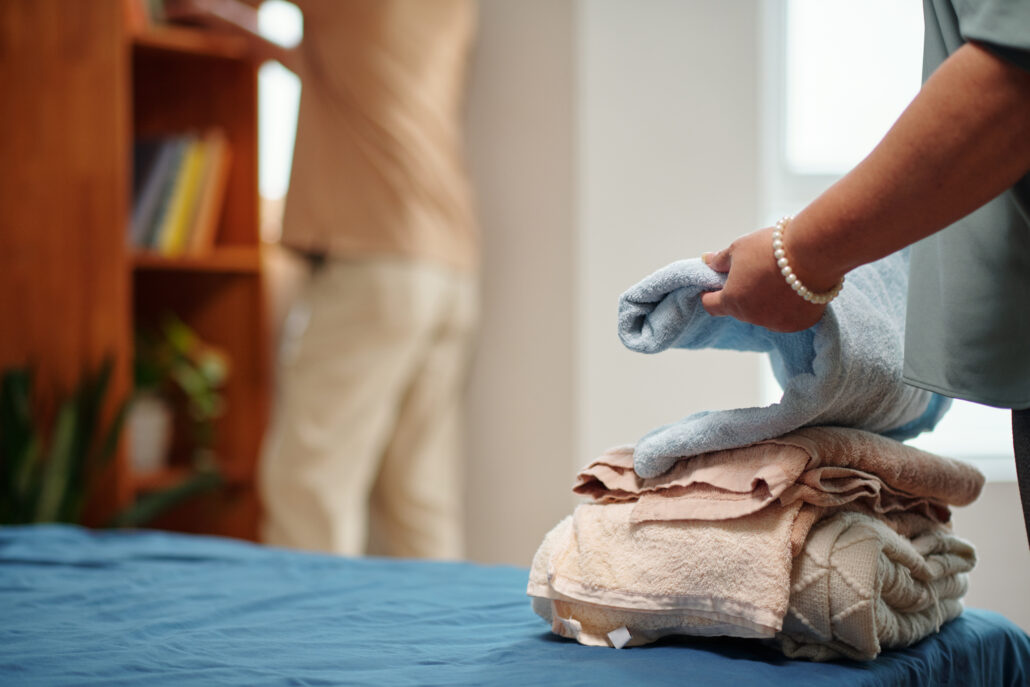Unplugging can feel almost impossible in our tech-focused lives, even as we settle in for the night. Our beloved devices often become the barriers between us and a restful night’s sleep. But what if we could strike a balance between our digital lives and our sleep health? Let’s take a closer look at setting healthy boundaries with our gadgets to ensure we’re getting the restful sleep we need.
The Impact of Blue Light on Sleep
As it turns out, the light from our screens does more than catch our eye; it disrupts our internal clocks, tricking our brains into thinking it’s still light outside and making it harder to fall asleep. Steering clear of blue light as we wind down could be our ticket to dreamland [1].
Psychological Effects of Technology Before Bed
While preparing for a good night’s sleep, we often consider physical hurdles such as a comfortable sleeping environment or dealing with nighttime disruptions from children or work-related stress. However, that last-minute scroll? It’s like a double espresso for our brains, revving up stress that can leave us tossing and turning.
Strategies for a Tech-Smart Bedtime Routine
Here’s a cozy blanket of strategies to wrap around your nighttime routine and create more peaceful slumbers:
- Set a Tech Timeout: Decide to turn off all gadgets at least an hour before bed to give your brain a break.
- Switch to Night Mode: Use the night settings on your devices to cut down on blue light in the evening.
- Make Your Bedroom a Tech-Free Zone: Get rid of TVs, computers, and other screens from where you sleep to help you relax.
- Don’t Keep Your Phone by Your Bed: Move your phone away from your bed so you’re not tempted to start scrolling when you should be sleeping or right when you wake up.
- Try Blue Light Glasses: If you have to look at screens at night, wear glasses that block blue light to protect your eyes and sleep pattern.
- Relax Before Bed: Do something calming instead of looking at screens, like reading or taking a warm bath, to tell your body it’s sleep time.
- Turn Off Notifications: Use “Do Not Disturb” or turn notifications off so you’re not woken up by your devices.
- Charge Your Devices Elsewhere: Charge your tech in another room to cut down on distractions and reduce exposure to radiation.
- Limit Your Screen Time with Apps: Use apps that help you track and limit how much time you spend on your screens.
- Make Your Bedroom Sleep-Friendly: Along with less tech, make sure your sleep space is cool, dark, and quiet.
Embracing Better Sleep in the Digital Age: Unplugging for Healthier Nights
Incorporating these subtle changes into your evening routine can shift your nights from restless to restful. Practicing good sleep hygiene is key to staying healthy, and today, that means being smart about how we use technology. For more advice on embracing better sleep in our digital age, check out our blog where we’re spilling the secrets to stealing extra sleep. Try out these tips to find the best mix for you and enjoy the perks of unplugging and getting the zzz’s you need!
By balancing our digital device use and our need for sleep, we can set the stage for nourishing rest. Let’s make space for more z’s and less screen time, one night at a time.
References:
- Harvard Health Publishing – Blue light has a dark side
Sleep Foundation – How Electronics Affect Sleep



